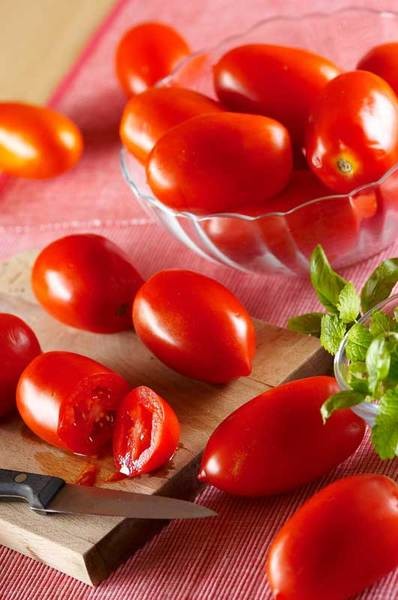 Tomato ketchup recipeAccording to another version the wordketchup is derived from the word koechiap or ke-tsiap, which in translation from one of the Chinese dialects means brine of salted fish or shellfish. And tomatoes were introduced into this sauce by the British, or rather, British sailors brought this Chinese fish and shellfish seasoning to their homeland, where one nimble resident of New England thought of adding tomatoes to it, and the result was an excellent seasoning for anchovies and oysters. The British began to use the word ketchup for its name, slightly changing the Chinese ke-tsiap to ketchup. Apparently, this happened at the end of the 17th century - at least, the word ketchup was first printed in a cookbook in England in 1690. Another source states that ketchup is a term derived from Asian cooking, where it meant a sweet sauce, made from tomatoes. If we turn to the 19th century, then in the publications of that time we can also find very strange from a modern point of view ketchup recipes, far from modern tomato ketchup, for example, lemon ketchup or mushroom ketchup. In general, it seems to be a mystery covered in darkness. The history of the tomato ketchup we are accustomed to begins with Henry Heinz, who in 1876 released the first can of this seasoning. Gradually, ketchup became widespread in the British Empire, then in the USA, and after World War II it conquered Europe and Asia. Today, according to international FDA standards, a product called ketchup must contain boiled and strained tomato sauce, vinegar, sugar, salt, onion, garlic, and spices - cinnamon, cloves, mace, nutmeg, allspice, ginger and cayenne pepper. Variations of the named components can be very different, and therefore there are many brands of tomato ketchup. Ketchup as a medicine According to a number of experts, ketchup contains lycopene, which is so necessary for the prevention of cancer and heart disease, and tomato fibers in ketchup activate the gastrointestinal tract. Dieters will be interested to know that one tablespoon of ketchup contains only 16 calories and is completely fat-free. True, fresh tomatoes are much better in terms of health benefits, but one does not interfere with the other. Scientists from the University of Dusseldorf have recently come to interesting conclusions. As a result of the experiments, they found out that in ketchup, in combination with fats (and this is usually the combination in which it enters the body, since ketchup is diligently seasoned with fatty dishes), carotenoids are active, which help the skin fight the harmful effects of sunlight. As a result, in the summer, people who actively consume ketchup are much more protected from the often harmful effects of the sun. Ketchup as a psychological indicator American psychologist Donna Dawson believes that ketchup can be used to determine a person's personality. As a result of her recent research, she came to the conclusion that people are divided into several types, depending on how they eat ketchup:
Tomato ketchup recipeAccording to another version the wordketchup is derived from the word koechiap or ke-tsiap, which in translation from one of the Chinese dialects means brine of salted fish or shellfish. And tomatoes were introduced into this sauce by the British, or rather, British sailors brought this Chinese fish and shellfish seasoning to their homeland, where one nimble resident of New England thought of adding tomatoes to it, and the result was an excellent seasoning for anchovies and oysters. The British began to use the word ketchup for its name, slightly changing the Chinese ke-tsiap to ketchup. Apparently, this happened at the end of the 17th century - at least, the word ketchup was first printed in a cookbook in England in 1690. Another source states that ketchup is a term derived from Asian cooking, where it meant a sweet sauce, made from tomatoes. If we turn to the 19th century, then in the publications of that time we can also find very strange from a modern point of view ketchup recipes, far from modern tomato ketchup, for example, lemon ketchup or mushroom ketchup. In general, it seems to be a mystery covered in darkness. The history of the tomato ketchup we are accustomed to begins with Henry Heinz, who in 1876 released the first can of this seasoning. Gradually, ketchup became widespread in the British Empire, then in the USA, and after World War II it conquered Europe and Asia. Today, according to international FDA standards, a product called ketchup must contain boiled and strained tomato sauce, vinegar, sugar, salt, onion, garlic, and spices - cinnamon, cloves, mace, nutmeg, allspice, ginger and cayenne pepper. Variations of the named components can be very different, and therefore there are many brands of tomato ketchup. Ketchup as a medicine According to a number of experts, ketchup contains lycopene, which is so necessary for the prevention of cancer and heart disease, and tomato fibers in ketchup activate the gastrointestinal tract. Dieters will be interested to know that one tablespoon of ketchup contains only 16 calories and is completely fat-free. True, fresh tomatoes are much better in terms of health benefits, but one does not interfere with the other. Scientists from the University of Dusseldorf have recently come to interesting conclusions. As a result of the experiments, they found out that in ketchup, in combination with fats (and this is usually the combination in which it enters the body, since ketchup is diligently seasoned with fatty dishes), carotenoids are active, which help the skin fight the harmful effects of sunlight. As a result, in the summer, people who actively consume ketchup are much more protected from the often harmful effects of the sun. Ketchup as a psychological indicator American psychologist Donna Dawson believes that ketchup can be used to determine a person's personality. As a result of her recent research, she came to the conclusion that people are divided into several types, depending on how they eat ketchup:
- people who are determined to "knock" a lot of ketchup out of a bottle onto a plate, are often methodical and reliable people, but they can be pedantic and afraid of change;
- ambitious persons pour ketchup into the middle of the dish;
- creative people can sit for a long time and draw lines and shapes with ketchup;
- those who pour ketchup drop by drop onto a plate - they are kind people, lead a conservative life, but dream of an exciting vacation;
- well, and frivolous persons draw faces on a plate with ketchup or write words.
Ketchup Recipes
If you look closely at the currentshelves, you can literally be amazed by the incredible abundance of ketchup varieties. Especially if you consider the fact that until recently there were only 5-6 varieties in the whole world. Today, it seems that manufacturers no longer know what else to come up with to amaze consumers. For example, ketchup of red, burgundy, yellow, orange, green and gray colors is already quite a normal phenomenon. And not so long ago, the company "Heinz" threw a new bright blue ketchup onto the market called "Stellar Blue". Heinz specialists assume that blue ketchup should become especially popular with children. Well, time will tell. But even if you do not pay attention to the color of the product, your eyes run wide from the variety of names - shashlik, spicy, chili, Italian, Crimean, sweet, summer, steppe with garlic, Tatar, etc. In general, there is plenty to choose from. However, it is much more interesting to make ketchup from tomatoes grown in your own garden (and perhaps not only tomatoes) - it will be both tastier and healthier, because manufacturers add various preservatives to ketchup, which are not at all good for our health. Some of the world's famous ketchup recipes can be found below. But first, a few words about the general technology. All ketchups are usually prepared according to the same principle: puree is made, which is then boiled down over low heat. So boiling down is one of the most difficult and crucial moments. Boiling down should continue until the ketchup acquires the consistency of real puree: you can't rush, since only water should evaporate, but not juices. It is also necessary to ensure that after the water has evaporated, the juices that settle to the bottom do not burn. This can spoil the aroma, taste, consistency and shelf life of the ketchup. Therefore, when boiling down the tomato mass, you have to stir it constantly. At the same time, you cannot cover it with a lid. The boiling mass constantly gurgles, "shoots" - you need to keep your eyes away, and for reliability it is better to protect them with glasses, and it is better to put on a kitchen glove on your hand. This will save you a lot of trouble. And after the ketchup is cooked, it is placed in small jars or bottles and (if you do not plan to destroy the product within a week) it is necessary to sterilize for 15-20 minutes.









